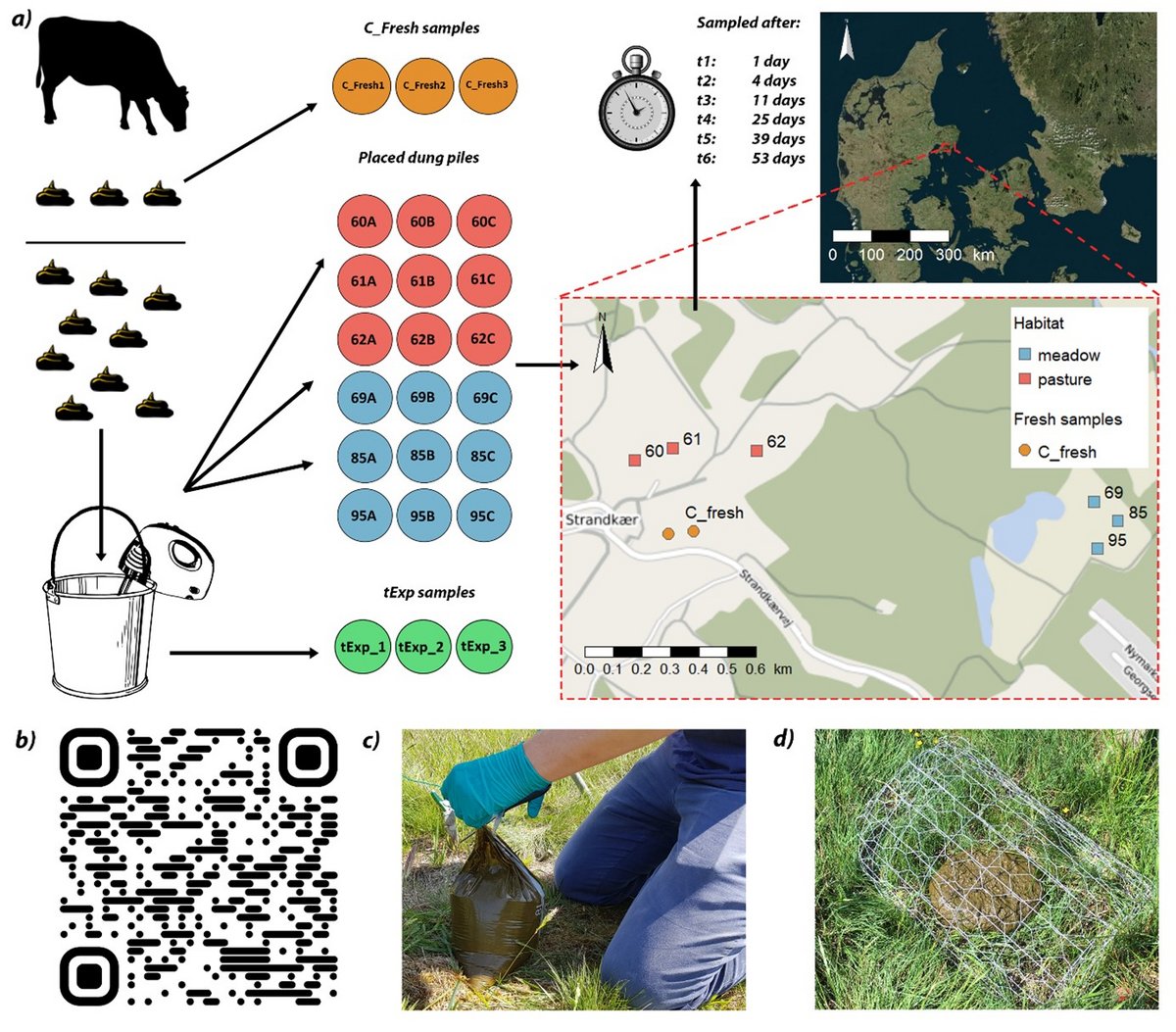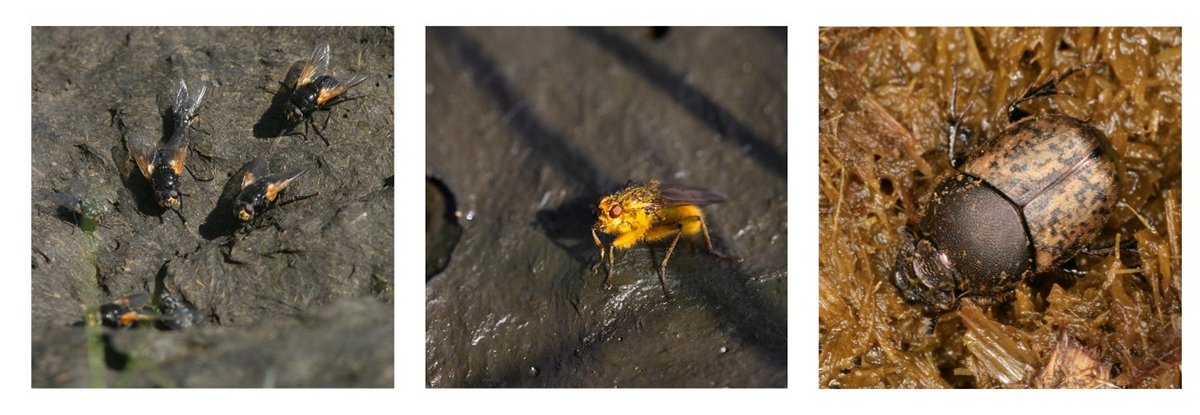Who arrives first? DNA reveals temporal dynamics in dung-colonization of arthropods
New study shows temporal dynamics of arthropod colonization of cattle dung and reveals functional stability of the dung-degradation process, with a redundancy of species associated with dung decomposition.

Insects are very important for decomposition of dung from large mammals, but the exact pattern of colonization has so far not been studied in detail.
In a new study, researchers from Institute of Biology at Aarhus University collected a large pool of fresh dung from rewilded cattle, mixed it and separated the dung into 18 smaller identical pools to represent freshly laid dung pats. Afterwards, samples were collected at six timepoints over 50 days and environmental DNA was extracted from the samples and used to obtain a detailed picture of the arrival of a vast number of different insect species.

“It is impressive how detailed information we get from such data. We obtain detections of 172 dung-associated species over time and can use this to evaluate which groups of species generally arrive early, and which comes at later stages” says Emil Thomassen, who is leading author of the study.
The authors find strong changes in the community compositions over time, and detected multiple species associated with early and late timepoint, respectively.

“We generally find that that beetles and flies who lay eggs in the dung whereafter the larvae develop in the dung and feed upon it, arrive early and remain present for a long time. And in contrary, the predatory and fungus-eating beetles and flies arrive later, following the species which they feed upon,” Emil says.
In a functional perspective, these data suggest that dung-degradation might be robust against loss of dung-associated species.
“We detect a high diversity of species who can decompose the dung material, which might be important in relation to global change. If some species are lost from the system, other species within the same functional groups might be able to fill the vacant niches of potentially disappearing species, although this remains to be investigated directly” says Philip Francis Thomsen, who is senior author of the paper.

Using environmental DNA to investigate dung-associated communities of arthropods is a relatively new field, but this study shows how the use of this method can greatly advance our understanding of the biological processes in dung. The study shows that if methodological pitfalls are considered and handled properly, the method has high potential for future studies of dung-associated communities. It will be interesting to see how environmental DNA can enhance our knowledge about dung-associated communities in the future.
Do you want to know more? You can read the full paper here, and this blog post from the Journal’s blog Animal Ecology In Focus.
Authors of the paper: Emil Ellegaard Thomassen, Eva Egelyng Sigsgaard, Mads Reinholdt Jensen, Kent Olsen, Morten D.D. Hansen & Philip Francis Thomsen
Funding: Carlsberg Foundation
Published in: Journal of Animal Ecology, 12th of June 2024
